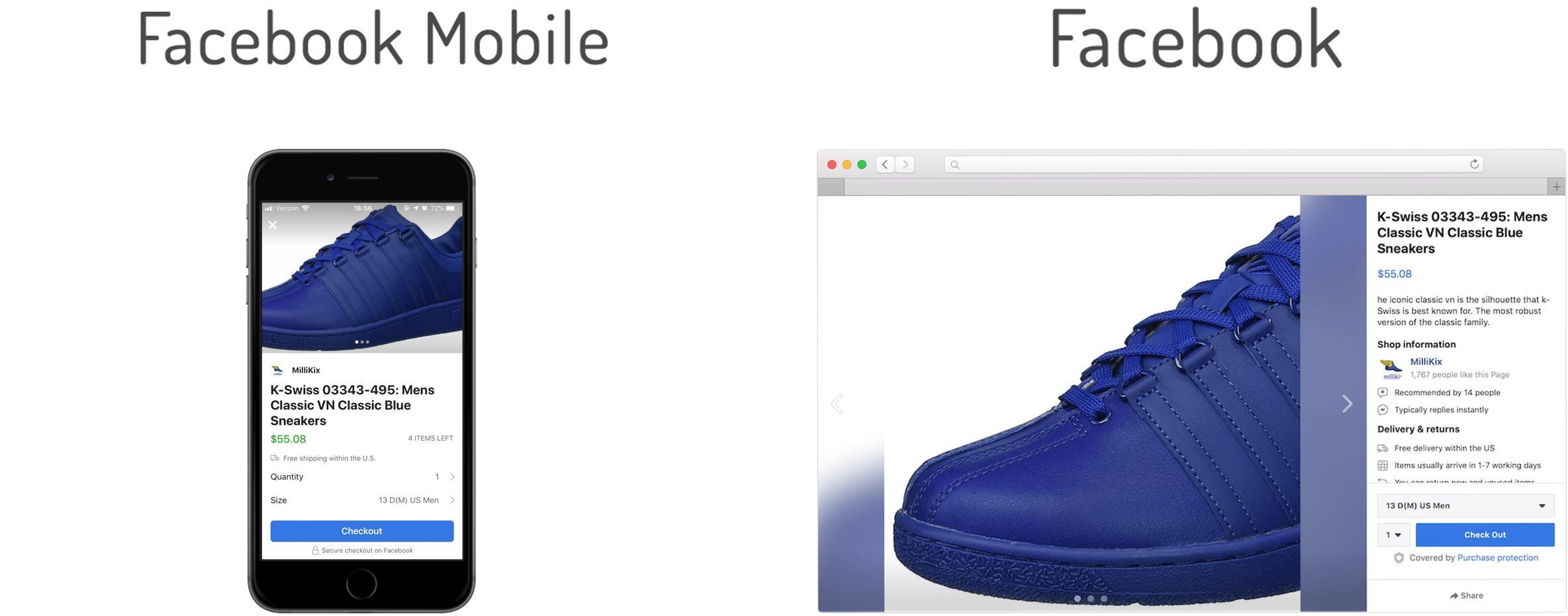Facebook has been trying to figure out e-commerce for the last decade, but it’s prior retail initiatives have mostly been a string of stumbles. However for the past two years - since October 2016 - Facebook has been building a classifieds marketplace. The marketplace reminds the most of Craigslist and eBay, if not for the close integration with the overall Facebook social ecosystem.
Social networks like Facebook, Instagram, and to a lesser extent Pinterest, can, in theory, easily establish marketplaces. They have millions of consumers locked in, solving the hardest part of two-sided markets - bootstrapping them. This allows starting to introduce supply to the market without having to attract both the supply and demand sides at the same time. If it works the marketplace provides social networks with direct transactions monetization, differentiating from advertising.
Starting this summer Facebook has started to quietly expand the Facebook Marketplace to include businesses selling retail products. According to our research it has already surpassed the first 150 sellers.

Facebook Marketplace allows shoppers to purchase items without leaving facebook.com or the Facebook app, and mostly has the same functionality as other e-commerce marketplaces. Products have ratings and reviews, browsing by category, and some resemblance of suggested products. Each seller is attached to a Facebook Page, allowing that page to have a Shop section listing their products.
Shoppers can also ask friends for feedback on any product, follow the sellers they like and rate them. It has the basic functionality to enable social shopping, a type of shopping rarely seen in the US except for services like Groupon. That’s because unlike in Asia, many consumers in the West tend to see online shopping and social media as two distinct activities. “This is people-based commerce, there’s real identity,” Facebook’s vice president of Marketplace Deborah Liu said in an interview.
“Facebook Marketplace is used in 70 countries by 800 million people around the world each month to buy and sell things” is the invitation. Unlike other marketplaces that take a percentage of each sale, Facebook Marketplace has no listing fees. Facebook monetizes it through advertising, allowing sellers to sponsor their products to appear at the top of search results.
The K-Swiss Classic Blue Sneakers can already be bought from the same seller on Facebook Marketplace, or on Amazon, eBay, or Walmart marketplaces. At the same price. It’s sold by MilliKix, one of the sellers selling on all of those marketplaces, offering largely the same catalog across all of them. On Amazon their products have the richest content thanks to product reviews, but the same image, description, and inventory availability are synced on all channels.

But it all feels clumsy and unpolished. The browsing experience on Facebook Marketplace is limited to search, and there is no curation or reliable recommendations. On the website version at facebook.com, for example, the only filter available is price range, otherwise leaving all the marketplace items to be browsed as an endless list. The core functionality of performing a transaction is there, but not much else.
“We have to tell our story differently because what people know about us is not really who we are anymore,” said Suzy Deering, eBay’s chief marketing officer. eBay has spent years educating past and new shoppers that it is no longer an used auction website (80% of all merchandise sold on eBay is new, 89% of items sold on eBay are Buy It Now – no bidding necessary). In the same light Facebook’s decision to put retail products, customer-to-customer classifieds, and most recently jobs, rentals, and auto listings under the same Facebook Marketplace banner is a strange.
Even more strange is that brands are completely absent from the Facebook Marketplace - unless the product title mentions the brand name the brand is not shown. Which means that brands don’t get their own page or brand store like they often do on other marketplaces. Given how much of the conversation around marketplaces is on brands it’s strange to see it missed by Facebook.
Which in the end asks the question of why shoppers, or retailers, or brands should care about the Facebook Marketplace. On the one hand it potentially has hundreds of millions of soon-to-be shoppers, but on the other hand Facebook has long ways to go to prove it can build a retail destination. It technically has the building blocks in place to do so, but it’s severely lacking in execution.

